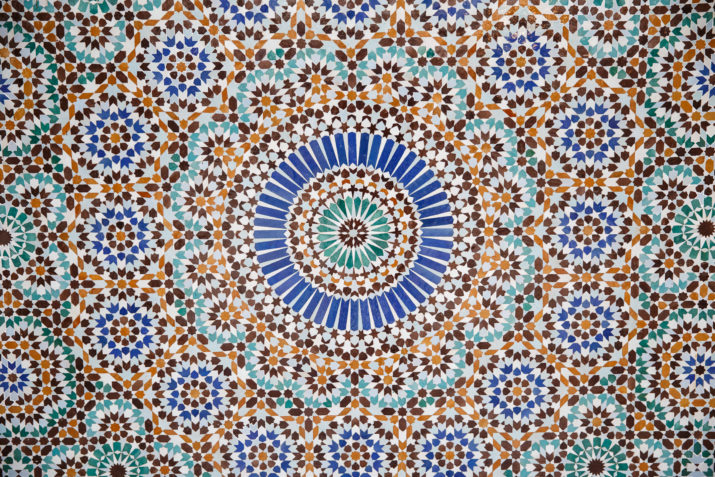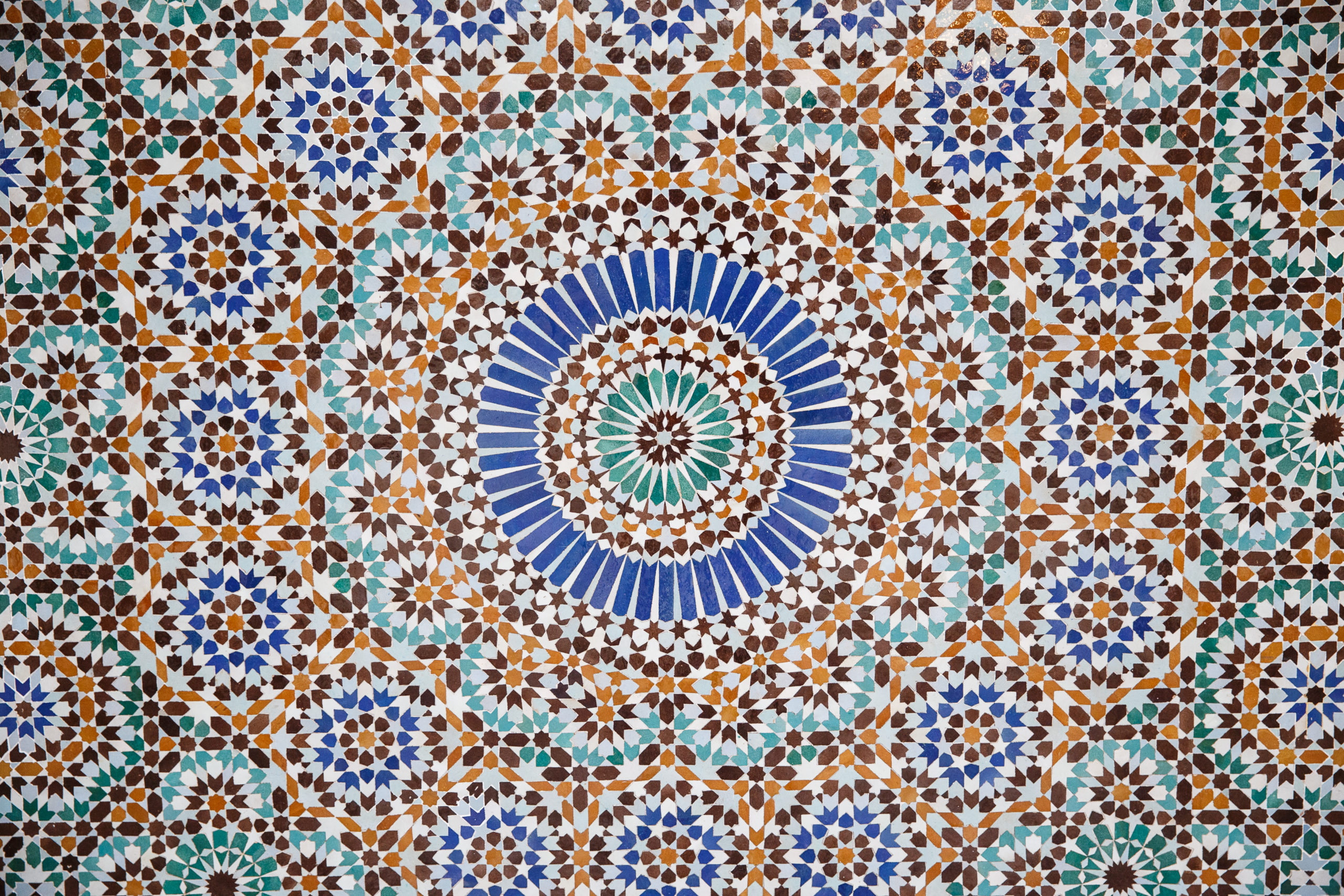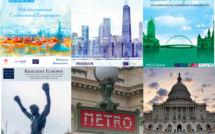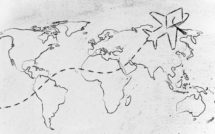

This is part of our special feature, Imagining, Thinking, and Teaching Europe.
Ideas of Islam have been a part of Europe for centuries; Muslim people came in large numbers because of colonial ventures and post-1945 labor migrations. Ironically, the efforts to reduce migration in the 1970s led even more families to arrive, fearing that the doors would soon be closed. With greater numbers came greater demands to make it possible to practice Islam in these new lands. Much of European politics has thereafter reacted to those demands, and to the very presence of those populations. Scholars have responded with massive numbers of studies about the Muslims who live in—often as citizens of—countries of Europe. Mostly, those studies address problems—of integration, toleration, employment—linked to that presence. But to what extent have we studied Islam in Europe? How could Europeanists take greater cognizance of the ever-evolving traditions of Islam? Could the comparative study of Islam recognize Islam’s European forms as one adaptive stream of Islam among many in the world? Can these two academic traditions more fully address each other?
Is Europe Muslim, as well?
At least in theory, taking account of Islam qualifies the claim that Europe is Christian. Our views of European history and society ought to change as we pay greater attention to the long-term presence of Islam, especially in the Balkans and Russia, but also in a more complex sense in Andalusia. This greater attention has made studies of European Islamic communities a stronger option for students seeking to situate their dissertation research in Europe. The older Mediterranean trope has been augmented with an Andalusian or post-Ottoman one when organizing academic panels and justifying scholarship.
Furthermore, recent works also address a key topic in Islamic studies, by tracing the tensions between different understandings of the Islamic tradition in specific European places. Two examples from opposite ends of Muslim Europe highlight shifting confrontations between “traditional” Islamic understandings and practices, on the one hand, and revivalist claims to “culture-free” forms, on the other—a central trope in debates throughout the Muslim world. Kristen Ghodsee’s (2009) Muslim Lives in Eastern Europe traces the shifting weight of Turkish, Bulgarian, and Arabic roots and references in a southern, minority region of Bulgaria. Mikaela Rogozen-Soltar’s (2017) Spain Unmoored, situated in contemporary Granada, looks at how recent converts to Islam both celebrate Andalusia and proclaim a culture-free Islamic authenticity, a stance resented by Moroccans who bring with them long-standing North African ideas about Islamic practice—and who resent the image of peaceful Andalusian coexistence of Spaniards with Muslims, because of their keen awareness of painful contemporary realities of racism and exclusion. These and many other studies give greater visibility to the complex perceptions and feelings held by differently-situated Muslims about their own Islamic practices (prayer, dress, fasting) vis-à-vis those of other Muslims living in the same place.
But once we move above these local fields, it is far from clear that studies such as these make Islam central to the discussion of “Europe.” When Olivier Roy asks (in his 2020 book title), Is Europe Christian?, he explores the question in terms of the (declining) degree of religiosity of “identity Christians.” The historical and contemporary presence of Muslims does not have a bearing on the answer. (His answer to the book’s question is: “Regrettably, no.”) In an earlier work, Vers un islam européen, Roy (1999) had identified the direction of “a European Islam” a greater concern by younger Muslims with ethics and spirituality for the individual Muslim, and lessened interest in community norms and institutions. For European scholars who follow this prediction, Islam in Europe becomes a matter of, on the one hand, the individual’s Bildung, and, on the other, Muslims’ social problems. Scale counts. Just as details disappear from a map as you zoom upwards, when one moves above the Muslim locality, Islam appears mainly as a matter of immigration and foreignness; internal debates about religious ideas and practice vanish from the screen. Only dimly visible are ways Muslims have adapted institutions and reinterpreted texts in new contexts.
Islamic challenges to national models
Islam has also brought new challenges to national traditions, testing them and shedding new light on their particularities and peculiarities. As European states grapple with these challenges, they have revived and reworked, often to strange effect, older concepts, such as laïcité (secularism) in France, multiculturalism in Britain, “pillarization” (social segmentation by religious or political affiliation) and its cultural-nationalist replacement in the Netherlands, and Leitkultur (main culture) in Germany.
Timing is key. Take France and the emotions aroused by public forms of Islam. These encounters followed a long series of challenges and responses concerning the role of the Catholic Church―the anti-clerical spirit at century’s turn, somewhat moderated in the law of 1905; the Church’s refusal of the law and its subsequent toilettages; and confrontations after World War II over school funding. But they also came right on the heels of the demise of the Soviet empire, and by 1989 a new enemy needed to be found. The rise of what came to be called “Political Islam” served nicely, even if three middle-school girls wearing headscarves could not quite replace the Russian bear as a threat. The Islamic irritant reoriented laïcité, away from preserving a balance between the Church and the secular world, and towards erasing Islamic signs in public space—at first attacking the scarves on those girls’ heads in schools, then face-veils anywhere in public, and extending to visible advertisements for halal-only food shops. (Unsurprisingly, less has been made, even in 2020, of how face-veils can guard against viral spread.)
By 2010, bashing multiculturalism had become the shared sport of Western Europe’s leaders. In Britain, the trigger was the series of demonstrations against the publication of Salman Rushdie’s Satanic Verses. They seemed to signal that post-colonial laborers were in fact agents of Islamic dictators, and that multiculturalism was not working. In Germany, Angela Merkel sounded the same bells on the demise of multiculturalism. In the Netherlands, the assassination of Theo van Gogh legitimated for many a turn against Islam and against the explicit ideal of cold tolerance, a remnant of the pillarization policy. Academic analysts framed the assassination as the leading indicator of a growing conflict of values. Two works show a range of treatments. Ian Buruma’s (2006) very accessible Murder in Amsterdam portrays the events through in-depth portraits of three self-righteous characters. The annoyingly outspoken libertarian van Gogh shows Dutch frankness pushed to a fault, but so do the other two players: the Sudanese enlightened denouncer of Islamic patriarchy Ayaan Hirsi Ali, and the radicalized Dutch-Moroccan assassin Mohammed Bouyeri. Starting from the same event, Paul Sniderman and Louk Hegendoorn (2007) in When Ways of Life Collide argue that there is a deep cultural divide in the Netherlands (and more generally in Europe) between liberal and Islamic values, particularly on the treatment of women. Their book’s subtitle, Multiculturalism and its Discontents in the Netherlands, captures the indictment brought against Western Europe for its weakness against backwards Islam.
Whether or not multiculturalism was indeed the policy in these countries, what do these complaints have to do with Islam? The more or less explicit tenet in these indictments is that misguided policies permitted Muslims to behave as Islam tells them to do toward women—namely, badly. And that, more generally, Islam has not progressed past pre-modern concepts of rights and equality. Pretty much absent from these scandal-focused accounts is any serious grappling with efforts by locally-based Islamic scholars to think through Islam in their new context of life and work. Which raises the broad question of authority.
Who speaks for Islam?
Absent a central governing institution for the Islamic world, Islamic forms of authority variably articulate a shared knowledge of texts, especially the Qur’an and the hadith, the latter relating statements and actions attributed to the Prophet Muhammad, with regional traditions of jurisprudence. The workings of authority depend on multiple institutions (seminaries, courts, specialized bodies) and a sense of the (more or less broadly construed) legitimacy of local practices. But Europe poses different challenges. Without local Islamic traditions in most of the continent, and given multiple streams of Islamic ideas and practice, who would have the authority to resolve disputes, or give legitimate responses to questions posed by Muslims only recently arrived in Europe? And without broadly-accepted Islamic institutions already in place in Europe, to whom would Muslims turn for advice, education, or rulings on scriptural interpretation? Would they create new institutions in European capitals, turn back to long-standing councils and courts in Muslim-majority countries, or construct hybrid solutions, perhaps with European state support?
From the Europeanist side, this question became formulated as that of the “governance of Islam,” which referred rather narrowly to European states’ efforts to regulate Islamic practices. These efforts followed the patterns already in place for the governance of other religions. In France, the post-Napoleonic pattern of forming councils as intermediaries between the state and a religious community was extended to Muslims; other states, with less clear of a pattern to apply, improvised more or less successfully, but overall the range of these councils’ activities is very limited, in some cases mainly coordinating feast-days. This question has become a familiar one for Europeanists, fitting as it does into a set of questions about state-society relations, and explored by Jonathan Laurence (2012) in The Emancipation of Europe’s Muslims, a comparative analysis of state efforts to construct governance structures for their Muslim communities. The best-studied issue in this arena is that of the support for and multiple legitimacies of mosques, as in Marcel Maussen’s (2009) Constructing Mosques: The Governance of Islam in France and the Netherlands.
But these state-initiated councils deal with only a fraction of the questions about Islamic practices that Muslims pose. In their everyday lives, ordinary citizens and residents of Europe who consider themselves Muslims have worries and desires that run the gamut from staying safe and earning a living to creating families and caring for loved ones. Many of them also have concerns with respect to Islam. These concerns have to do with knowledge, practices, and institutions, and they, too, involve questions of authority, who speaks for Islam.
Arguably, the study of Islamic institutions in Europe has been strongest, at least in terms of description, when the object of study has been mosques and movements, the approach starts from the Islamic end, and when the scale at least takes account of the local. Three very different studies suggest the range of approaches. Ahmet Yükleyen’s (2012) Localizing Islam in Europe accounts for differences in ideas and practices of authority in two major Turkish Islamic movements, the Gülen and the Süleymani, as they articulate with the two distinct state governance structures of Islam in the Netherlands and Germany, thereby tracing how institutions adapt to contrasting political environments. Gilles Kepel’s (2012) Quatre-Vingt-Treize, the last of a series of his studies of Islam in Europe, traces the “three ages” of Islam in post-war France—defined in terms of Islamic movements and changing types of leaders—and situates it in a section of the Seine-Saint-Denis department where one finds an unusual density of Islamic institutions. This approach permits him to follow different movements, for example the Tabligh, including a high level of detail in his focus on the imbrication of these institutions with French political life. Innes Bowen (2014, no relation), in her Medina in Birmingham, Najaf in Brent, provides a detailed account of the major Islamic movements present in the country, from their origins elsewhere in the world to their settlement in the UK.
A similarly strong current of work traces movements whose special character is their mobility, as in transnational Sufi cults. Perhaps the most ambitious is Pnina Werbner’s (2003) work on Pilgrims of Love, following a Sufi cult across Pakistan to Britain, as well as Sophie Bava’s (2003) work tracing multiple movements across Africa, including their stops in Marseilles (“Les Cheikhs mourides itinérants”). These studies of mosques and movements represent the “comfort zone” in the study of Islam in Europe, where there is a clearly-bounded object and a set of suitable descriptive tools at hand in the social and historical sciences.
What are Muslims’ concerns about Islam?
Muslims’ concerns about Islam include: worshipping and praying, eating and fasting, marrying and divorcing, learning and teaching, and dying and thereafter. To varying degrees (dying itself is ignored), these everyday concerns require specific resources, from teachers and worship leaders to access to appropriate food, cemeteries, and worship spaces. It would seem that studying Islam in Europe—as distinguished from the lives of European Muslims—would surely begin with these concerns and remain focused on them even as other issues are also explored. But has that been the case?
Let’s look at them. Worshipping and praying include the most public of practices but also the most intimate. As central as prayer is doctrinally, its intimate, internal character makes it a difficult object for study on any continent. Those works that have done so, such as Saba Mahmood’s (2005) close-up of Cairene pious women, Politics of Piety, attract attention in part for this intimacy—but in her case also because the book called out American feminist scholars for their assumptions about their own moral superiority.
Collective worship seems to be an easier object, because its public demonstrative character can be viewed as indicative of something political. Sermons can be read as texts indicating an authoritative set of directions for the community. Friday collective worship can also be read as indices of the Muslim threat. When in the Goutte d’Or district of Paris, some worshippers ended up on prayer rugs in the street, the image into tropes of Muslims invading public space—the focus of much French anti-Islamic hostility. But we have fewer extensive studies of mosque communities than one might think. We need such studies because mosques are the most important defining institutions for Muslims in any country. They are also fought over as weapons to control Muslim populations by the countries from which Muslims have traveled to Europe. Islamic movements tend to locate in mosques, where, even for a moment, they can be studied.
The mention of eating and fasting suggests feast-days, halal, supply chains and traceability, but also spirituality, which is virtually absent from recent studies. Anne-Marie Brisebarre’s (1998) La Fête du Mouton treats celebrations of the feast-day Îd al-kabîr in French urban spaces; these and other studies of universal Muslim celebrations successfully bring European contexts into the global comparative study of Islam. Somewhat more recent are studies of halal food; the tone of some set in France tends toward the skeptical, as with Florence Bergeaud-Blackler’s (2017) incisive Le Marché Halal, and the work by Kepel cited above. Those set in the UK are less so, and this difference corresponds to a widespread distinction between attitudes toward and scholarship on Islamic institutions in those two countries.
The study of marrying and divorcing has long been central in Muslim societies; studies of the topic among European Muslims have been slower to progress. Recent work on legal dimensions of divorces often is part of work carried out at Islamic studies centers where someone happens to develop an interest in Europe, as with Germany’s Mathias Rohe. In my own case, work on the topic in Indonesia led me to study shari’a councils in Britain, for example in my book On British Islam (2016), where the founders thought they would be governing many of the specifically Islamic dimensions of Muslims’ lives, and were surprised when they ended up dealing almost entirely with cases of divorce initiated by women, which most Islamic authorities assert requires a judge’s declaration. That what is at stake is especially the international validity of a divorce reminds us that issues for Muslims in Europe are never just about Europe.
Perhaps the most innovative among new Islamic institutions—but also the least studied in Europe—are Islamic schools at various levels and in both private and public realms. In her Pious Practice and Secular Constraints, Jeanette Jouili (2015) studies the efforts by young Muslim women in France and in Germany to study Islamic sciences in new institutions of higher learning. Jouili emphasizes the self-confidence these women obtain, and that across their life activities, from secular schools to work places, they derive a sense of injustice that leads them to intensify their ethical labor on orthodox modes of scholarship. Her work joins that of others in linking the study of Islamic knowledge, practices and institutions in Europe to ongoing anthropological discussions on ethics. These studies constitute one of the few “positive” treatments of Muslims in Europe, but they range from celebrating these spheres of women’s agency through piety, to seeing these efforts to study Islam mainly as ways of insulating themselves against social problems.
Surely Islam is everywhere in European studies, one of the major topics, sometimes obsessions, of writing on Europe, because it is so for many Europeans. But let me suggest that it is less Islam than a series of things-that-go-awry, from uncontrolled immigration to peri-urban riots to loss of confidence in the Enlightenment that are the unavoidable topoi of writing in and on Islam in Europe. Our challenge then becomes turning from Islam as shorthand for shortcomings, and toward Islam as a set of texts, interpretive conventions, internal debates, and social institutions that are increasingly part of the life worlds of Europe’s Muslims.
John R. Bowen is Dunbar-Van Cleve Professor at Washington University in St. Louis. He studies questions of Islam, law, and society in Indonesia and Europe, and his latest books include Pragmatic Inquiry (Routledge, 2020) and On British Islam (Princeton, 2016). Awarded a Guggenheim prize in 2012 and named a Carnegie Fellow in 2016, he is a Fellow of the American Academy of Arts and Sciences.
References:
Bava, Sophie. 2003. “Les Cheikhs mourides itinérants et l’espace de la ziyâra à Marseille.” Anthropologie et Société 27 (1): 149-66.
Bergeaud-Blackler, Florence. 2017. Le Marché Halal, ou l’invention d’une tradition. Paris: Seuil.
Bowen, Innes. 2014. Medina in Birmingham, Najaf in Brent: Inside British Islam. London: Hurst.
Bowen, John R. 2016. On British Islam. Princeton: Princeton University Press.
Brisebarre, Anne-Marie, ed. 1998. La Fête du Mouton: Un sacrifice musulman dans l’espace urbain. Paris: CNRS Éditions.
Buruma, Ian. 2006. Murder in Amsterdam: The Death of Theo van Gogh and the Limits of Tolerance. New York: Penguin.
Ghodsee, Kristen. 2009. Muslim Lives in Eastern Europe: Gender, Ethnicity, and the Transformation of Islam in Postsocialist Bulgaria. Princeton: Princeton University Press.
Jouili, Jeanette S. 2015. Pious Practice and Secular Constraints: Women in the Islamic Revival in Europe. Stanford, CA: Stanford University Press.
Laurence, Jonathan, 2012. The Emancipation of Europe’s Muslims. Princeton: Princeton University Press.
Kepel, Gilles. 2012. Quatre-Vingt-Treize. Paris: Gallimard.
Mahmood, Saba. 2005. Politics of Piety: The Islamic Revival and the Feminist Subject. Princeton: Princeton University Press.
Maussen, Marcel. 2009. Constructing Mosques: The Governance of Islam in France and
the Netherlands. Amsterdam: Amsterdam School for Social Science Research.
Nielsen, Jørgen S., and Lisbet Christoffersen, eds. 2010. Shariʿa as Discourse: Legal Traditions and the Encounter with Europe. Farnham, UK: Ashgate.
Rogozen-Soltar, Mikaela H. 2017. Spain Unmoored: Migration, Conversion, and the Politics of Islam. Bloomington: Indiana University Press.
Rohe, Mathias. 2015. Islamic Law in Past and Present. Leiden: Brill.
Roy, Olivier. 1999. Vers un islam européen. Paris: Esprit.
—–. 2020. Is Europe Christian? Oxford: Oxford University Press.
Sniderman, Paul M., and Louk Hagendoorn. 2007. When Ways of Life Collide. Multiculturalism and its Discontents in the Netherlands. Princeton: Princeton University Press.
Werbner, Pnina. 2003. Pilgrims of Love: Anthropology of a Global Sufi Cult. Indianapolis: Indiana University Press.
Yükleyen, Ahmet. 2012. Localizing Islam in Europe: Turkish Islamic Communities in Germany and the Netherlands. Syracuse: Syracuse University Press.
Photo: Mosaic pattern in Paris Mosque, France | Shutterstock
Published on June 3, 2020.




